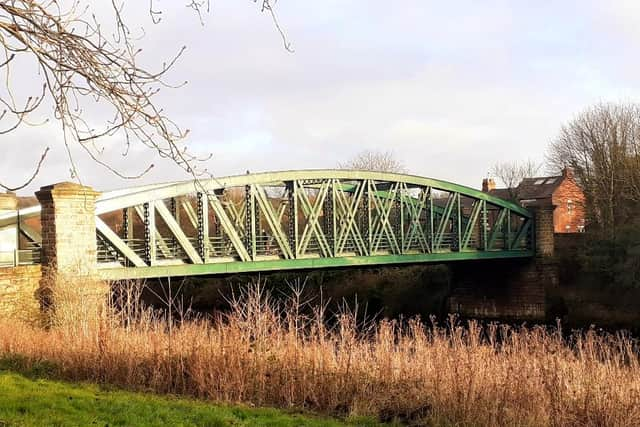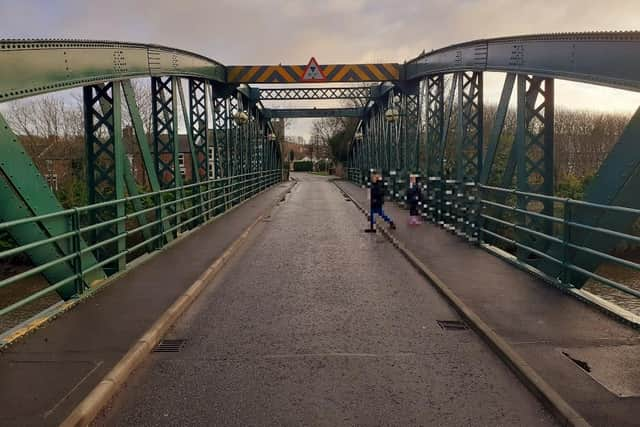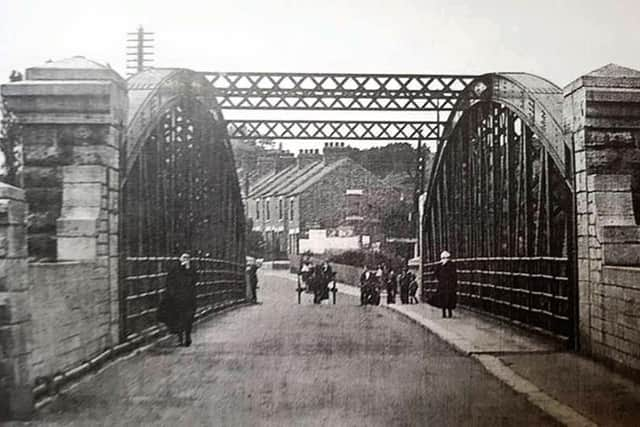Fatfield Bridge: The story of Sunderland's first road bridge over the River Wear, and the man who built it
and live on Freeview channel 276
Geography dictates that it would not have the span of the Wearmouth, Queen Alexandra or Northern Spire bridges, but it is at least equally pleasing on the eye and has more history.
The Hylton (A19) and Chartershaugh (A182) bridges provide vital traffic arteries, but no one is likely to view them in the same romantic light.
Advertisement
Hide AdAdvertisement
Hide AdBut as well as being worth looking at, Fatfield Bridge has also played an essential role by linking Washington with Penshaw for over 130 years. Here is its story.


A desperately needed bridge is built
Unlike the current Wearmouth Bridge, Fatfield Bridge (or Penshaw Bridge, or Biddick Bridge, if you fancy starting an argument) is original. It was designed in 1888 and opened in 1890 – and not before time.
The nearest bridge to the east was the old Wearmouth Bridge (demolished and replaced by today’s incarnation in 1929) a few miles away. The nearest bridge to the west was close to Chester-le-Street and not much help either.
The Victoria Viaduct was half a mile away, but was a railway bridge. The Cox Green footbridge was not built until 1958. In other words, a Fatfield-Penshaw river crossing could only be made by either fording or floating.


Advertisement
Hide AdAdvertisement
Hide AdThe job of designing the bridge was given to David Balfour, a highly respected civil engineer who lived in Houghton. The location was to be close to Worm Hill on the Washington side, disputed home of the thoroughly unpleasant Lambton Worm.
It would be a tied-arch or bowstring bridge, meaning there would be an iron arch rib on each side of its road supporting the whole structure.
The total cost of the project was £8,000 which is the equivalent of about £1million in today’s money. The price included the approach roads, which did not exist before the bridge. The bridge is part of Station Road, so-called because it led to Penshaw Railway Station, until it closed in 1964.
The cost and other facts and figures


Precisely £1,020 was raised by public subscription, ie. a whip-round. The rest was provided by grants from local government and highways authorities, plus a £2,750 loan taken out by the Houghton-le-Spring Highway Board to be repaid over 20 years.
Advertisement
Hide AdAdvertisement
Hide AdIt was officially opened by the Earl of Durham, John Lambton, on Wednesday, January 29, 1890.
The hard statistics of the bridge, civil engineering fans, are as follows:
The abutments (supporting pillars at each end) are made from rock and were supplied by the Whitburn Coal Company from their quarry in Marsden. The ironwork weighs a total of about 200 tons.
The foundations are sunk 30ft into each river bank. So it isn’t going anywhere. It has a span of 155ft but is only 32ft wide – and that includes its two pavements.
Advertisement
Hide AdAdvertisement
Hide AdThis means that it’s too narrow for two-way traffic. Cars were little more than a novelty in 1890. Even if it had been built 30 years later, the volume of traffic we know today would still have been unthinkable. Its 21st century traffic lights are a safety essential.
David Balfour
The bridge’s designer was born in Dundee in 1838, but later moved to Houghton with his wife. Balfour Street near the A690 is named in his honour.
Mr Balfour was an outstanding clever-clogs. As well as multiple achievements in civil engineering, he was also a Fellow of the Geological Society, the Royal Meteorological Society and the Royal Sanitary Institute. The Balfours were quite fanatical on sanitation.
David Balfour died at Myre Hall (demolished in the 1960s) in Houghton in 1914.
Advertisement
Hide AdAdvertisement
Hide AdHis son, David Balfour jnr, was born in Sunderland in 1866. He attended Kepier school in Houghton, before following in his father’s footsteps and joining the family business. He became a giant in sewage, as it were, and was author of the 1925 work Sewerage of Towns on Tidal Waters.
Despite its rip-roaring title and its passionate arguments that the discharge of sewage into the sea was not necessarily a regrettable waste of fertilising matter, it was not a best seller.
Modern days
As the 20th century wore on the sheer volume of vehicles on Britain’s roads became something that David Balfour could not have imagined.
The pressure on the bridge was relieved, literally, in 1975 when the A182 Chartershaugh Bridge was built to carry traffic between Washington and and Shiney Row on a dual carriageway.
Advertisement
Hide AdAdvertisement
Hide AdNot that the Fatfield Bridge is any less handy, as local motorists discovered in 2012 when it was closed for a time to carry out £600,000 worth of maintenance. The price of that maintenance puts the original cost of actually building the bridge into some perspective.
The scenes on the bridge should the A182 ever be put out of commission for some reason, do not bear thinking about.
But what this modest piece of Victorian engineering lacks in capacity it makes up for in charm and is still a centrepiece for locals living at either end of it.
In 2016 the bridge was festooned with 2,016 knitted poppies to commemorate those who had lost their lives at the Battle of the Somme a hundred years earlier. They were created by the Wessington U3A War memorial group.
Advertisement
Hide AdAdvertisement
Hide AdIt’s difficult to imagine this having the same potency on a more modern bridge. At 131 years old and counting, we can only hope that the Northern Spire will enjoy a similar longevity.
Long live Fatfield Bridge.